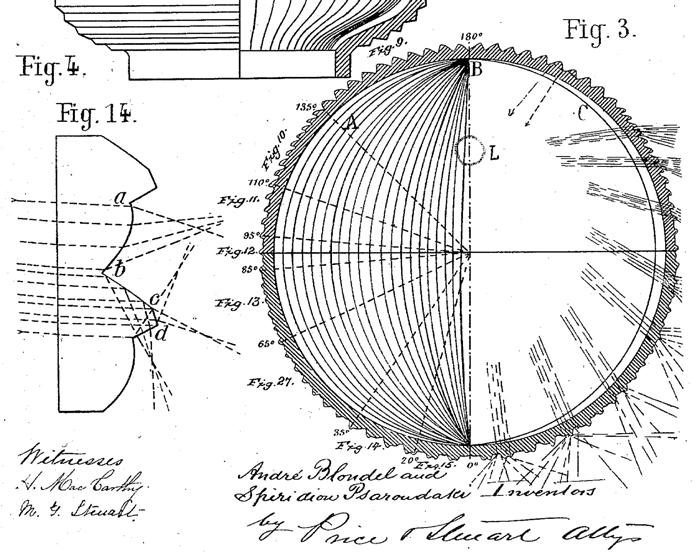 The term "Holophane" is used generically to describe clear molded
glass or crystal shades and globes with parallel or crosscut prisms.
Vintage Holophanes (circa 1890s-1950s) are outstanding examples of
mid-twentieth century industrial art. The crisp clean lines create a
beautiful glow when illuminated. Holophane glass was invented in the
1890s and was made in many shapes, sizes and patterns to provide
specific types of illumination. The term "Prismatic" is an alternative
term for Holophane glass.
The term "Holophane" is used generically to describe clear molded
glass or crystal shades and globes with parallel or crosscut prisms.
Vintage Holophanes (circa 1890s-1950s) are outstanding examples of
mid-twentieth century industrial art. The crisp clean lines create a
beautiful glow when illuminated. Holophane glass was invented in the
1890s and was made in many shapes, sizes and patterns to provide
specific types of illumination. The term "Prismatic" is an alternative
term for Holophane glass.
The name Holophane was coined by French
scientist Andre Bondel and Turkish born engineer, Spiridion
Psaroudaki in the 1890s for their newly invented glass. They described
the glass in the 1896 US patent #563,836
as having a "luminous appearance over its entire surface... entirely
shining."
and "having great beauty as well as illuminating power."
According to the Holophane Company's website, the term was "derived from
the Greek word 'Halos' meaning whole or entire and 'Phanein' meaning
to appear or to seem. Thus the word 'Holophane' was defined as to
appear completely luminous."
This
highly engineered glass was initially made in France in the 1890s. The
glass was designed with parallel prisms or ribs on the interior and
exterior in order to refract and reflect light, thereby preventing the
absorption of light. The engineering provided optimal illumination with
little glare. The greater amount of lead used in older glass provided
sparkle and life. The glass was originally made for both gas and
electric illumination. During the dim gas/electric era in which
Holophanes were invented, they were truly state-of-the-art performance
lighting.
For the most part, the glass was made
by companies under the name Holophane. The Holophane Company was
founded by Otis Mygatt in 1896 in London to manufacture "illuminating
appliances." At one point, there were three companies under Mygatt's
majority ownership with the name "Holophane": the Holophane Glass
Company in the USA, Holophane Ltd. in Britain and Holophane
Company in France. There is still a Holophane company in
business in the USA today.
At Brass Light Gallery we
sell only original vintage Holophanes primarily circa 1920s - 1950s.
These decades-old originals, salvaged from amphitheaters, naval yards
and other industrial buildings, are increasing hard to find. They
provide great task lighting for kitchen islands, tables and lofts. Each
of our Holophanes are fully restored and rewired for modern use. View
our Holophanes available for purchase at vintagebrasslight.com.
primarily circa 1920s - 1950s.
These decades-old originals, salvaged from amphitheaters, naval yards
and other industrial buildings, are increasing hard to find. They
provide great task lighting for kitchen islands, tables and lofts. Each
of our Holophanes are fully restored and rewired for modern use. View
our Holophanes available for purchase at vintagebrasslight.com.
Sources:
"History
of Holophane." Holophane.com. Holophane Company, 2007. Web. 18
May 2010. <http://www.holophane.com/company/history/index.asp>.
"Patent #563,836."Google.com/Patents. Blondel et al, 1896.
Web. 18 May
2010.<http://www.google.com/patents/about?id=dydiAAAAEBAJ&dq=563836>.